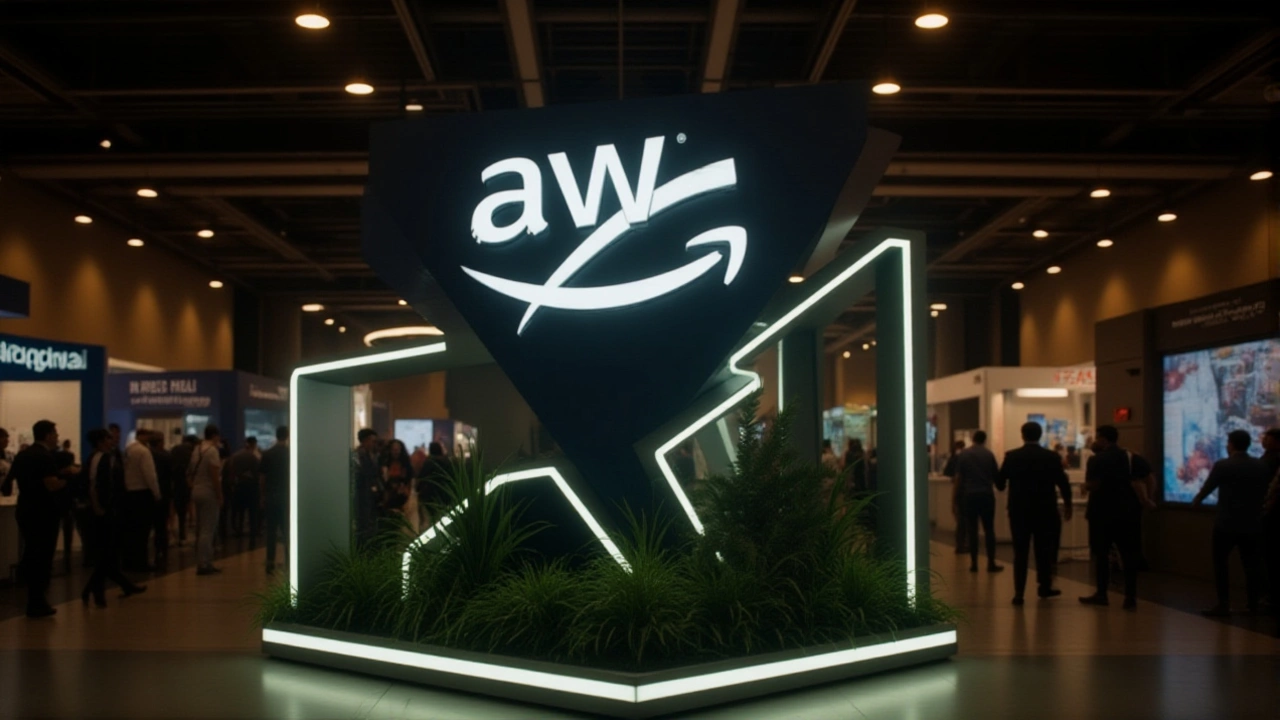When Amazon Web Services suffered an unplanned outage this week, the ripple effect was immediate and unsettling: the UK tax authority, two of the country’s biggest banks and a handful of globally‑used apps all went dark, leaving millions scrambling.
The disruption rippled through London and beyond on October 15, 2025, with service alerts flooding social media before the cloud provider hinted at “signs of recovery”. While Amazon’s engineers were working behind the scenes, customers of Her Majesty’s Revenue and Customs (HMRC) reported payment‑portal failures, and shoppers at Halifax and Lloyds Bank saw online banking gone blank.
What triggered the outage?
Amazon released a brief statement saying a “network‑level incident” within its US‑West‑2 region caused a cascade of service interruptions. The exact technical root hasn't been disclosed, but analysts point to a probable overload of the internal load‑balancing layer that fed downstream services like Amazon Elastic Compute Cloud (EC2) and Simple Storage Service (S3). Because both HMRC’s tax‑collection platform and the banks’ online portals rely on those APIs, the outage translated instantly into a customer‑facing blackout.
Services that went dark
- Government: Her Majesty’s Revenue and Customs – online filing, PAYE checks, and refund portals.
- Banking: Lloyds Bank and Halifax – mobile apps, online banking, and internal transaction processing.
- Social & communication: Snap Inc. (Snapchat) – story uploads and messaging.
- Video conferencing: Zoom Video Communications – meeting scheduling and joins.
- Gaming: Roblox Corporation and Epic Games (Fortnite) – login servers and in‑game purchases.
Each of these platforms listed AWS as a primary cloud partner on their public architecture diagrams, underscoring how intertwined modern digital services have become with a single provider’s infrastructure.
Why the outage matters
Beyond the inconvenience, the event highlighted three systemic risks. First, a single point of failure in a cloud megaprovider can cripple essential public services, raising national‑security questions. Second, the financial sector’s heavy reliance on AWS means that even brief latency spikes can trigger regulatory alerts about consumer protection. Third, the gaming and social‑media realms showed that downtime isn’t just a corporate headache—it can mean lost revenue worth tens of millions in a single day.
Industry reaction and analyst take
“We’ve seen cloud‑related incidents before, but the breadth of this one is unusual,” said Jordan Patel, a senior analyst at TechInsights. “When a provider that hosts both tax systems and retail banking goes dark, regulators from the FCA to HM Revenue start asking tough questions about redundancy and data‑sovereignty.”
HMRC’s press office released a short note confirming that manual processing was restored within hours, but it didn’t disclose exact figures. Similarly, Lloyds Bank posted on Twitter that “services are back online” and thanked “our technology partners for a swift resolution.” No official comment was obtained from Snap Inc., Zoom, Roblox or Epic Games at the time of writing.

Looking ahead: cloud reliability and regulatory scrutiny
British regulators have already signaled a push for “cloud‑risk assessments” for any service handling taxpayer data or financial transactions. The Financial Conduct Authority (FCA) is drafting guidance that could require dual‑cloud strategies or on‑premises failover for critical workloads.
For Amazon, the episode is a reminder that market dominance also brings scrutiny. In its public blog, AWS promised “enhanced monitoring” and “regional failover testing” to reduce the chance of a repeat. Whether those measures will satisfy governments and banks remains to be seen.
Key facts
- Date of outage: 15 October 2025 (initial impact reported at 09:32 UTC)
- Primary cloud provider affected: Amazon Web Services
- Major UK entities impacted: HMRC, Lloyds Bank, Halifax
- Global services disrupted: Snapchat, Zoom, Roblox, Fortnite
- Amazon’s status update: “signs of recovery” announced at 14:45 UTC
Frequently Asked Questions
What caused the AWS outage?
Amazon said a network‑level incident in its US‑West‑2 region overloaded key routing components, leading to cascading failures in EC2 and S3 services that many customers rely on for core functionality.
Which UK services were affected?
Both the online tax‑filing portal of Her Majesty’s Revenue and Customs and the digital banking platforms of Lloyds Bank and Halifax experienced downtime, preventing customers from filing returns or completing transactions for several hours.
How did the outage impact global apps?
Snapchat, Zoom, Roblox and Fortnite all reported login or matchmaking issues, with some users unable to send messages or join servers. The disruptions lasted roughly four to six hours before partial functionality returned.
What are regulators likely to do?
The UK’s Financial Conduct Authority and the Information Commissioner’s Office are expected to issue new guidance on cloud‑risk management, pushing firms to adopt multi‑region or multi‑cloud architectures to avoid single‑point failures.
Will Amazon change its infrastructure?
Amazon announced it will increase monitoring of its routing layer and conduct more frequent regional failover drills. Whether those steps will be enough to satisfy critics remains an open question.
